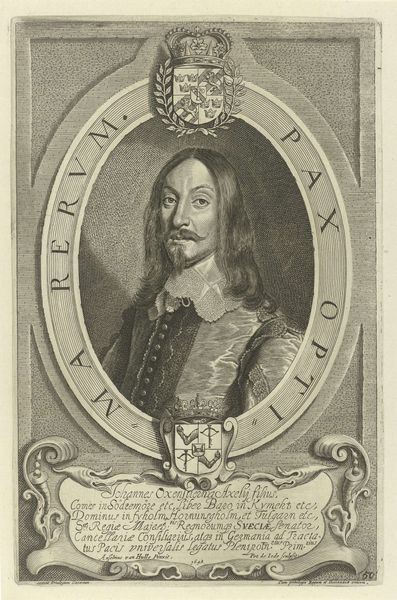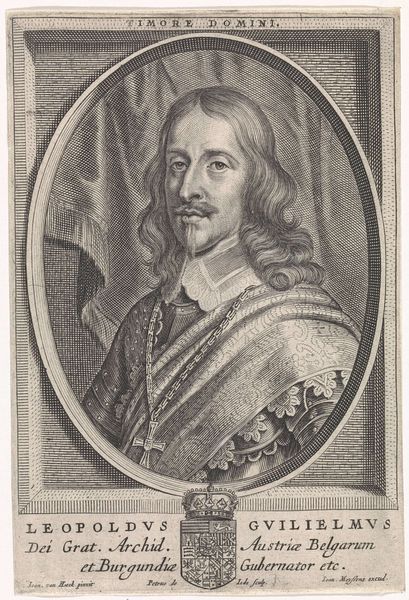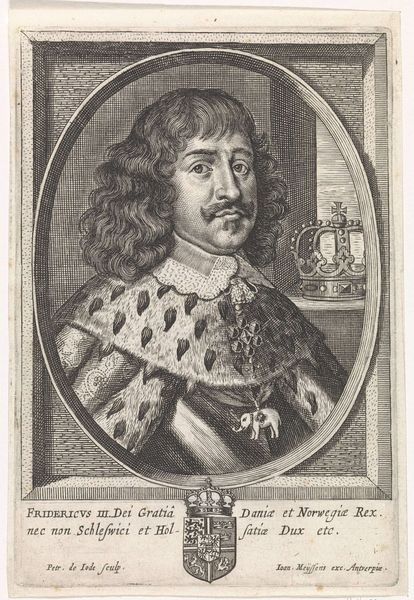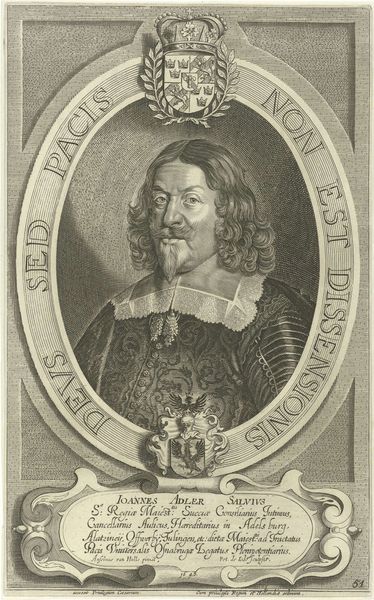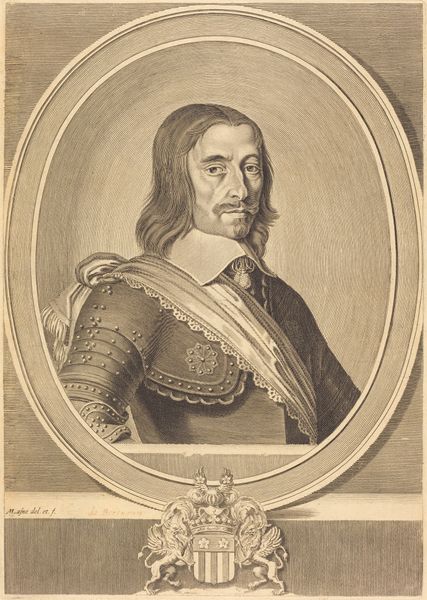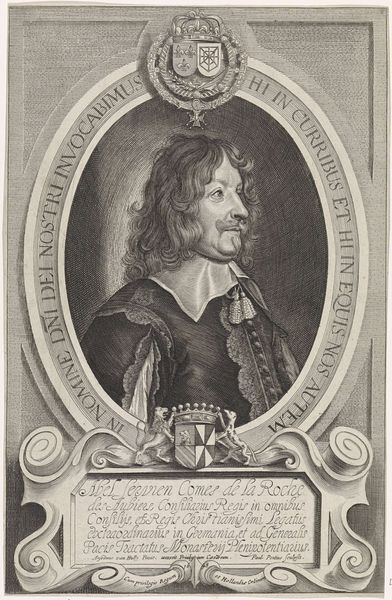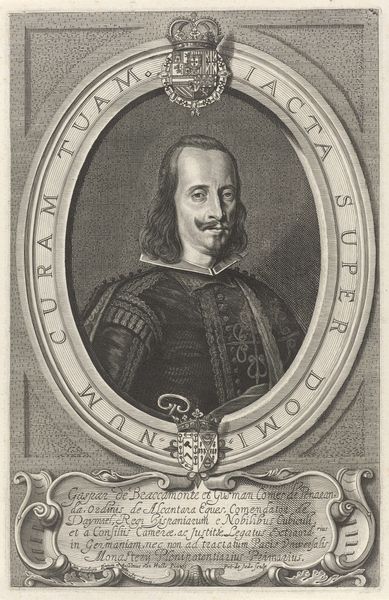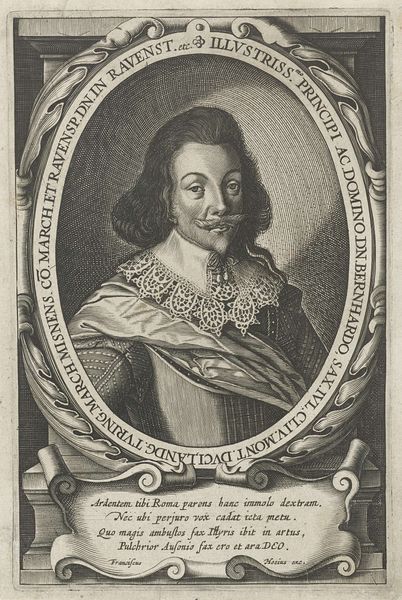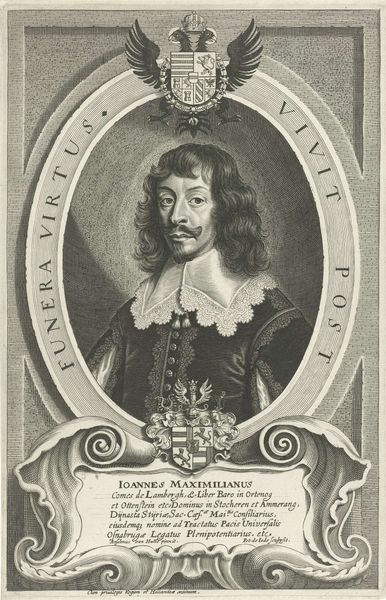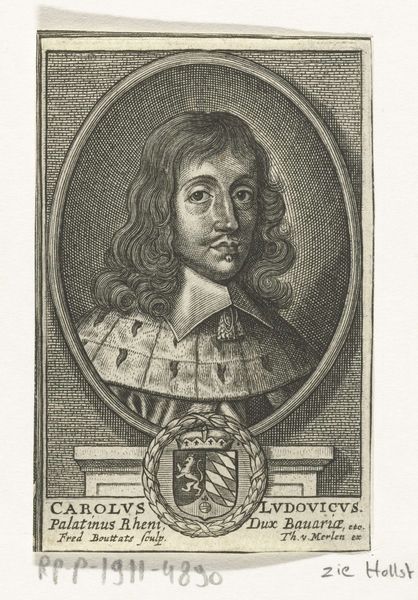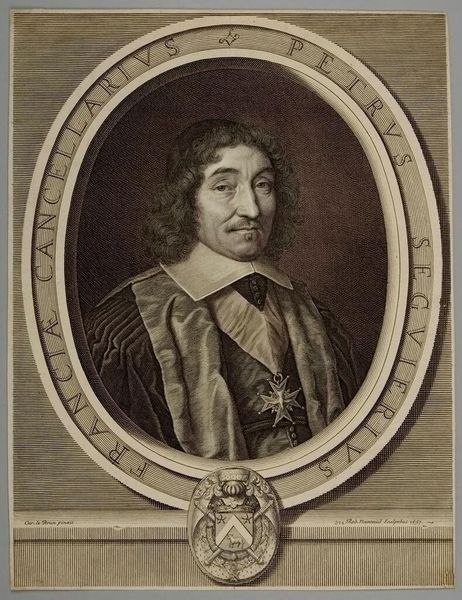
print, engraving
#
portrait
#
baroque
# print
#
old engraving style
#
portrait reference
#
portrait drawing
#
history-painting
#
engraving
Dimensions: height 308 mm, width 194 mm
Copyright: Rijks Museum: Open Domain
Curator: Standing before us is a print dating from sometime between 1648 and 1697, "Portret van Claudius de Mesmes, graaf d'Avaux" rendered by Paulus Pontius. An engraving, this piece currently resides in the Rijksmuseum. Editor: There's a melancholic air to it, wouldn’t you agree? The stark contrasts create an almost somber mood. His gaze, the dark tones… it speaks of a reflective, perhaps burdened individual. Curator: The artist certainly emphasizes line and texture to an intriguing degree. Notice the ornate details of the oval frame, filled with text, versus the relatively more simplified depiction of Claudius himself. It's a formal arrangement. Editor: And what a potent symbol of power—look at the family crests emblazoned above and below him, and then the Latin inscriptions wrapping the image, which seem to invoke some divine support of his labor. The sash indicates his high office, reinforcing his importance. One can sense his striving. Curator: Precisely. Observe how the baroque ornamentation functions less as pure decoration, and more as a structuring device. It emphasizes a rigid symmetry that is disrupted just slightly by the dynamism of his hair. There is an inner tension at play in how Pontius has organized these disparate elements. Editor: Beyond formal devices, consider the cultural weight: a diplomat in a time of significant European upheaval—the Thirty Years War ended just around the time this print was created. That context surely influences the meaning we draw from this portrait; his very image broadcasts power, authority, but perhaps even a sense of resignation in the face of such immense political pressure. Curator: A fascinating suggestion. Indeed, considering the engraving as both formal construct and historical document does add layers of interpretative depth to our experience. Thank you. Editor: It’s these visual records that remind us that history isn't just names and dates, but a tapestry woven from symbolic acts of self-presentation like this. Fascinating, isn't it?
Comments
No comments
Be the first to comment and join the conversation on the ultimate creative platform.
